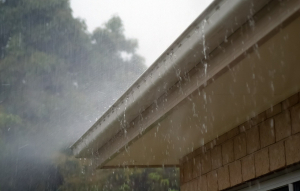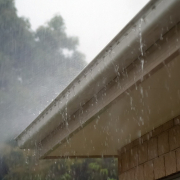Can you Roof in the Rain?
Can you Roof in the Rain?
When working on roof repairs or a new roof replacement, timing is critical. While everyone would want to schedule this type of work to be done on days when the weather is great and optimum, this isn’t always the case. Most of the time, roof repairs have to be done as soon as possible. Installing a roof can take more than just a day and scheduling with a roofer will also depend on their availability, especially if you want to get your roof done in the fall when so many other homeowners are booking roof repairs, maintenance, and replacements in preparation for the winter.
Hence, no matter what the weather, your roofers may have to get started on your roof. But what if it starts raining? Can you still roof in the rain?

Unfortunately, you can’t. While no one wants to put a stop to a roofing project or cause any unnecessary delays, there are actually a number of reasons why roofing in the rain is not advisable.
Reason 1 – It is not safe.
People who work on roofs in the rain put their own safety in danger. When working on a roof, you need to have good traction to avoid slipping and falling. The water makes the surface slippery and if your roof has a high slope, it becomes a highly dangerous area to work on. Working on a slippery and sloping surface that is nearly thirty feet above the ground will lead to major injuries.
Another thing that makes it dangerous is the possibility of lightning during raing. While thunderstorms are beautiful sights from a distance, standing on top of a roof during one probably is not the smartest thing to do.
Reason 2 – It can cause more damage
When repairing a roof, there are certain parts that need to be removed during the process. When it is raining and you remove a few layers from your roof, you are exposing the interior structure to the downpour. Instead of repairing the damaged area, roofers who do repairs in these conditions will only end up furthering damage by leaving moisture trapped inside or even causing pools of water to collect inside the roof.
Additionally, many roofing materials will be damaged even before you install them on your roof. New asphalt shingles, insulation layers, and other materials are not completely waterproof and if exposed to heavy rain prior to actually being installed on a roof, you’ll end up having a faulty roof within a week from installation.
While it is completely understandable to want to get things done as soon as possible, there is a much higher risk for the people working on the roof and the roof itself when it comes to roofing in the rain. Unfortunately, these are the times when one’s patience is truly tested. When your roof starts leaking or even when you’ve been long excited to get that new roof installed after waiting for weeks for an open schedule, checking on weather forecasts and ensuring that roofers stop and cover up at the first sight of rain should be done, especially if you want to avoid further damaging your property.
What Should I do Instead?
Aside from just waiting, there are still a few alternatives available.
If your roof needs repair during the rainy weather in the summer, we suggest calling our expert team at Wade Exteriors to get a good run through of your options. Often, we’ll start by placing a tarp over the leaky area to help prevent more water damage and wait for a window of dry weather to get the work done. Once mother nature gives us a sunny day or two, we’ll have your roof repaired and looking like new in no time at all.
Summary – Can You Roof in the Rain?
Short answer? No.
The main reasons supporting this is because it is not safe for the people working on your roof and because it will only cause more damage to your property.
Here is a summary of the reasons to Avoid Reroofing in the Rain
- It puts your home at a greater risk for water damage.
- A slippery, wet roof puts your contractors at risk.
- You risk ruining the integrity of your new roof.
- Shingles will not stick to a wet roof.



